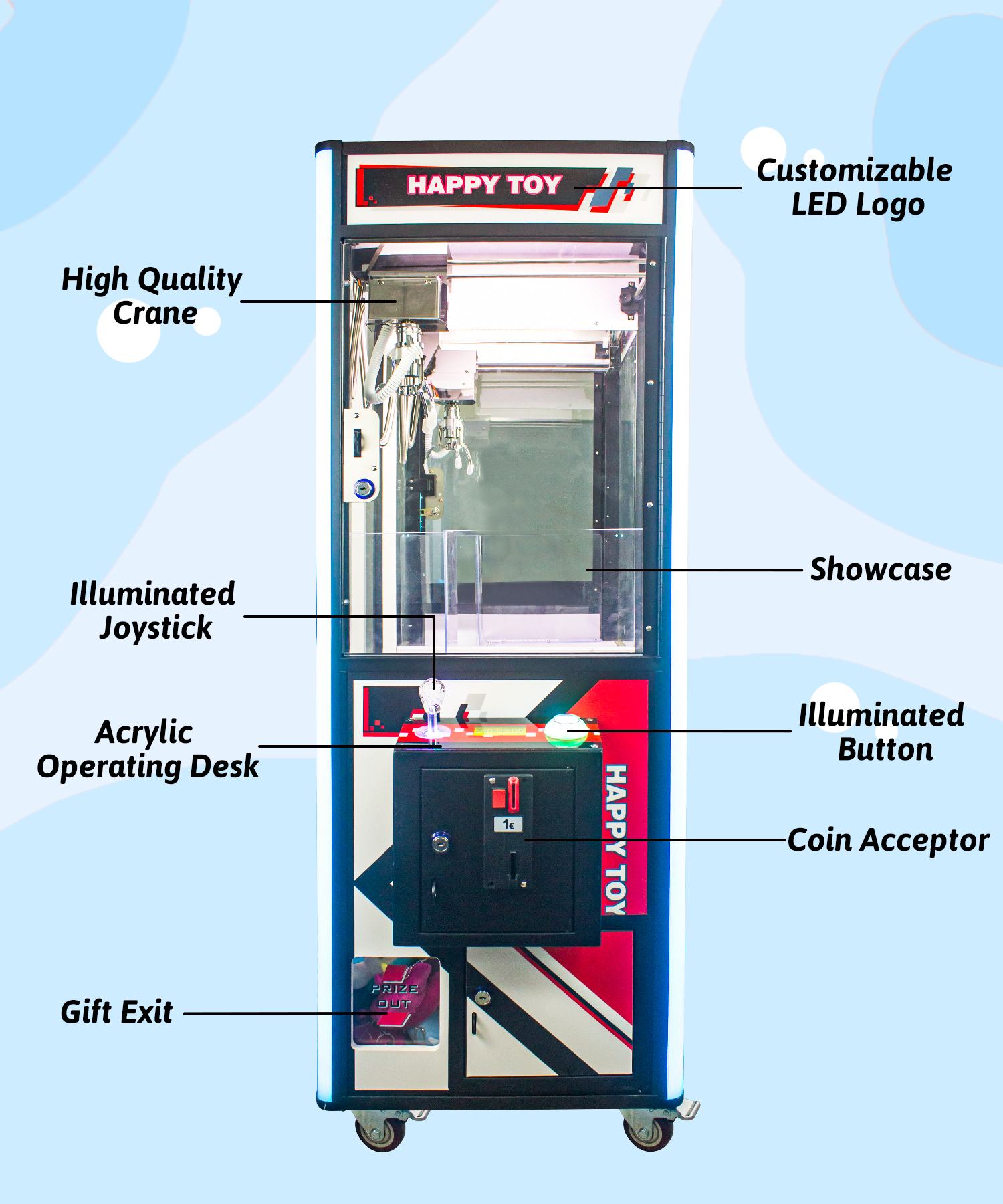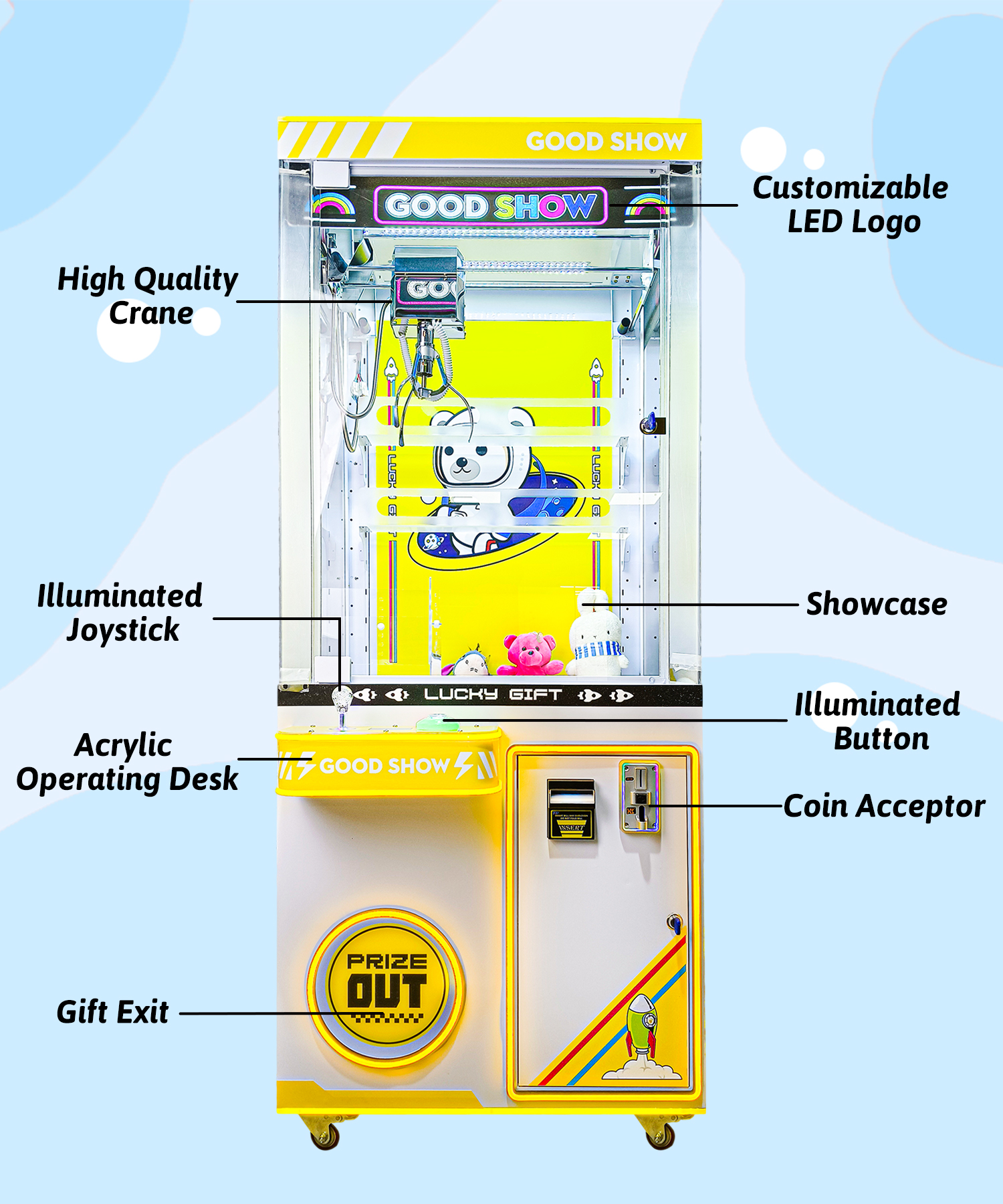To effectively operate claw machines, focus on optimizing placement for maximum visibility, regularly update the prize selection to maintain interest, implement routine maintenance to reduce downtime, use digital tracking for revenue analysis, and tailor machine settings for balance between challenge and reward, ensuring a steady 30% reinvestment in new prizes and maintenance.
Table of Contents
ToggleMonitor Daily Earnings
Establish Earnings Objectives: First of all, set your daily, weekly and monthly financial goals from prior outcomes to future predictions. In the vending industry, an easy benchmark is to go for a payback between 1-2 months per machine; However, your mileage may vary based on location and foot traffic.
Track On a Day-to-Day Performance: Observe Fluctuations. If your earnings on Wednesday are consistently lower than Saturdays, question why. Fewer visitors or the machine placement needs adjusting? You can make strategic decisions that improve profitability by looking at examining these patterns.
Assess Machine Properties: The devil is in the details, often. If the earnings are dropping off, how can we be sure it’s not because a setting for that machine (like an aspect of claw strength or prize value) needs adjusting? The key is just to balance – make the experience challenge but rewarding enough so people want to come back.
Use Technology for Visibility: You can track revenues automatically and minimize the human error factor by implementing a POS system that integrates with your claw machines. It can go so deep that it shows not just how much was made overall, but what each hour on the clock reported and even which specific coins went in or out of a machine.
Choose the right machine for your site
Know Your Audience: It might be obvious, but knowing what is coming through your doors to start with Are these young children, teenagers or a family? Not only does this dictate the design of the machine itself it also influences what type of prizes must go inside. Some examples: toys for kids, geek-centric accessories for teens, museum-quality artifacts for adults.
Match for the Place: Externally, the machine has to coincide with your interior venue style. But of course, a high-tech, neon-lit machine that will look awesome in a modern mall might not work quite so well if your outlet has an old-world charm to it.
Restock Prize Mix: Ensure that prizes are exciting and up-to-date by changing them on a regular basis. A superhero movie just opened? These Related Items It helps your content to remain fresh, increasing the chances of repeat customers.

Optimize Machine Placement
Evaluate Foot Traffic: Take a look at wherever folks have an inclination to cluster once they area unit in your venue. It is in the vicinity with a snack bar, entrance or rest areas perhaps? And here you could place your machines, as they have high foot traffic.
Machine Visibility: Make sure that your machines are visible as much by the customer who is walking into the store from all directions. A machine hidden in a corner is likely to attract dust rather than dollar signs.
Try Random Locations: You can always try different places out. 22 Try different settings for a month, and record how your posts are doing. For example, putting a machine near the checkouts, as people will often spend their loose change whilst in the queue.
Fund Management Philosophy
Establish an Acquisition Budget: Determine how much you can reasonably spend on new machinery before ever placing the order. A standard strategy may be “we put 30% of our quarterly profits back into upgrading out equipment”. It helps to keep your expenses in line with the income generated, hence you are comfortable and not financially stretched.
Account for Maintenance Expenses: Never be without a rainy day fund to address the costs of swapping out what needs replacing, and keeping your projects running. The rule of thumb is to keep aside 10% from monthly earnings for this purpose. This helps in the immediate and quick resolutions of issue without using any money from your main operational Resources both preventively by ensuring that no issues arise related to any major machinery used for production.
Prize Re-Investment: Prizes must be updated consistently. Take, lets say 20%, of that income and reinvest back into finding new enticing prizes. This maintains the inventory as fresh and inviting, which is important to keep players coming back for more.
Monitor Cash Flow: Use accounting software to keep tabs on all money coming in and out. It enables you to react immediately once a week, because of the weekly check-in and then quickly tune your budgets based on that Machine performance. Requests like “Why did Machine 5 made half as much this week?” have a direct impact to that strategy or justify, right there and then, if an intervention is required.
Invest More Wisely within the Place: Instead of all in with just claw machines. Having a diverse game portfolio can help protect you from an increase and decrease in popularity. Purchasing an everyday income mix of titles can level out daily earnings.

Run operations without major disruptions
Perform Maintenance Inspection: Regularly conduct inspections and servicing for each machine. You could maybe have chanted to yourself, — “We check up on all our machines every Monday morning before we open.” Checking if the claw is properly aligned, electronics are correct functioning and appearance of machine neat & clean.
Choose Quality Parts and Repairs: get rid of common break downs just used high-quality parts. Cheaper parts are tantalizing, but fit the old adage “you get what you pay for,” and longer term may lead to more frequent outages and overall higher costs due to lower-quality components.
Software Update: As mentioned, if your claw machines have a built-in software then always maintain the updates of that. By contrast, software updates do not only remove bugs, a better understanding of the machine or new features to improve implementation experience.
Contingency Plan: Establish how to respond to machine failures during peak hours. It could be in the form of a maintained quick fix toolkit or training staff to help crowd control when one machine goes down. A policy like, “we want any machine back online within 15 minutes after the report of a failure,” might reduce frustration and lost revenue.








